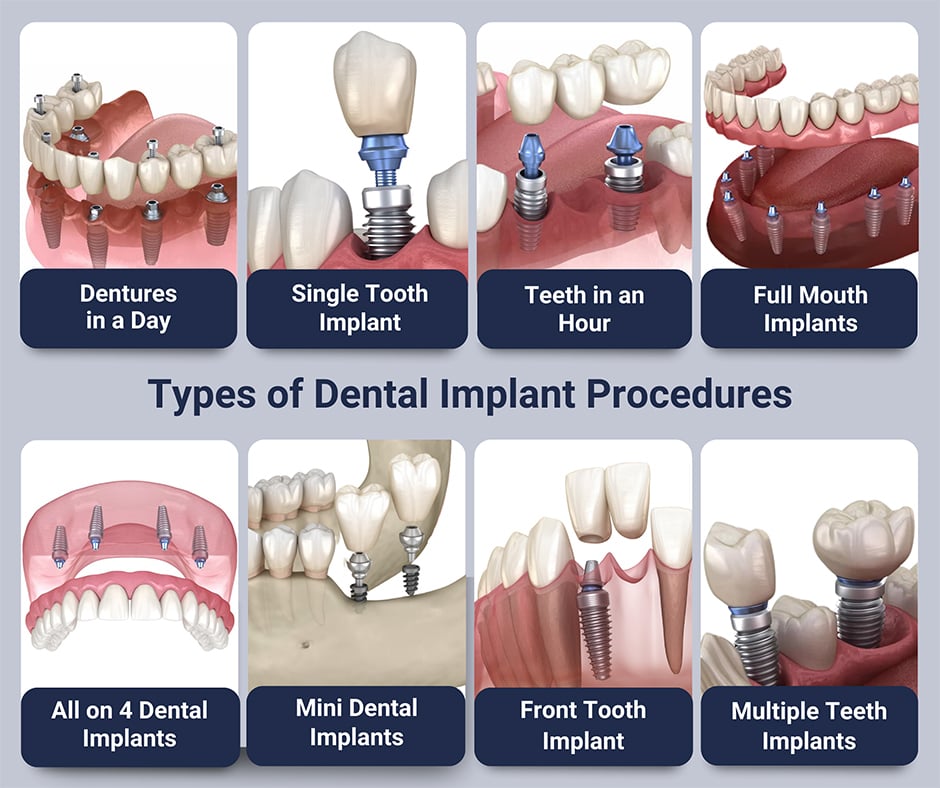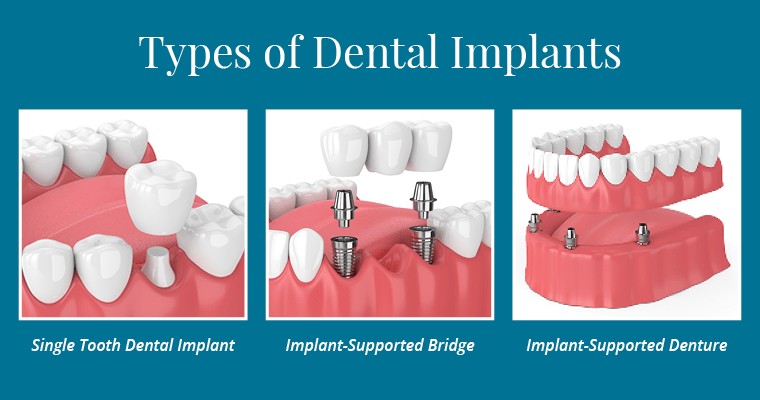Dental Implants for Dummies
Dental Implants for Dummies
Blog Article
Getting The Dental Implants To Work
Table of Contents5 Simple Techniques For Dental ImplantsThe Facts About Dental Implants RevealedThe 8-Minute Rule for Dental ImplantsDental Implants Fundamentals Explained
are clinical devices operatively dental implanted right into the jaw to bring back an individual's capability to eat or their appearance. They supply support for man-made (fake) teeth, such as crowns, bridges, or dentures. When a tooth is lost as a result of injury or condition, a person can experience issues such as fast bone loss, malfunctioning speech, or modifications to eating patterns that lead to pain.
Framework of The Dental Implant System selecting oral implants, speak to your oral company regarding the potential benefits and risks, and whether you are a prospect for the procedure. Points to consider: Your overall health is a vital consider determining whether you are a good candidate for oral implants, for how long it will take to recover, and for how long the implant may remain in location.
Cigarette smoking might affect the recovery procedure and decrease the long-lasting success of the dental implant. The recovery process for the dental implant body may take a number of months or longer, during which time you normally have a temporary joint in location of the tooth. the oral implant treatment: Meticulously comply with the dental health directions provided to you by your oral company.
The Main Principles Of Dental Implants
Implant failure can lead to the requirement for one more procedure to fix or replace the implant system. Recovers the ability to chew Recovers aesthetic look Assists keep the jawbone from reducing as a result of bone loss Protects the wellness of the surrounding bone and periodontals Assists keep surrounding (close-by) teeth stable Improves lifestyle Damages to bordering all-natural teeth throughout dental implant positioning Injury to the surrounding tissues throughout surgical procedure, such as sinus opening Injury during surgical treatment (for instance, fracture of surrounding jawbone) Insufficient function, such as feeling like the teeth do not bite with each other typically A sensation that the tooth hangs or twisting in place resulting from a joint screw loosening Implant body failing (looseness of the implant body) because of systemic infection, which might be most likely in people with unrestrained diabetics issues because of local infection in bone and gums supporting the implant body because of postponed recovery, which might be most likely in individuals who smoke Problem cleaning up the periodontals around the implant, causing poor oral hygiene Neglected periodontal disease Post-surgical numbness due to nerve impingement or damage Constantly notify healthcare companies and imaging professionals that you have dental implants prior to any kind of magnetic resonance imaging (MRI) or x-ray treatments.
FDA is not knowledgeable about any type of unfavorable events reported for MRI or x-ray treatments with dental implants. Oral implants systems are typically made from products that comply with global consensus standards of the International Organization for Standardization (ISO) or ASTM International. These requirements have information of what makes a secure product.
Dental implant systems are evaluated according to international agreement standards. Biocompatibility testing, to reveal that physical call with the device does not create issues like irritation or sensitive reaction, is part of the examination that helps make certain the materials in the oral implant system are safe and do not create adverse effects when implanted in people.

Facts About Dental Implants Uncovered
Some people are not eligible for oral implant surgical procedure. It is for dental cosmetic surgeons to operate on people with: severe illnessuncontrollable metabolic diseasebone or soft tissue disease or infectionIf these issues are solved, a person can have the surgical treatment. Dental Implants. In, oral cosmetic surgeons abstain from operating people with: If individuals with any one of the above next undertake dental implant surgical treatment, there is a greater danger of the dental implant failing
Some people have a jawbone problem that prevents enough bone for a dental implant from creating. In such situations, a doctor might require to perform a ridge modification. This involves lifting the gum tissue to expose the location of warped bone. The surgeon will click here for more info certainly after that use a bone or bone substitute to fix and develop up the location.
Oral implant surgical procedure is a customized process. Give you time to recover. Connect the article and final crown, bridge or denture.
Next off, your surgeon will carefully place the dental implant right into your jaw. Your cosmetic surgeon will certainly rearrange your gums and close the cut with stitches (Dental Implants). If your dental implant is near the front of your mouth, your dental professional will certainly make a momentary tooth for you to put on until you heal. That method, you will not have a void in your smile while you recover.
Everything about Dental Implants
Your provider can tell you what to anticipate in your scenario. Throughout the healing phase, your jawbone needs to fuse to the oral implant. This procedure, called osseointegration, is important for security and long-term success. website link This process can take anywhere from 3 to 9 months. Sometimes, it may take much longer.
As soon as your dental implant heals, your dentist can attach the abutment (tiny adapter blog post) and your last reconstruction (crown, bridge or denture). This usually takes about one hour to complete and might call for a 2nd small surgical procedure. You should not feel any type of pain during your dental implant procedure since your service provider will use medication to numb your gums.
Report this page